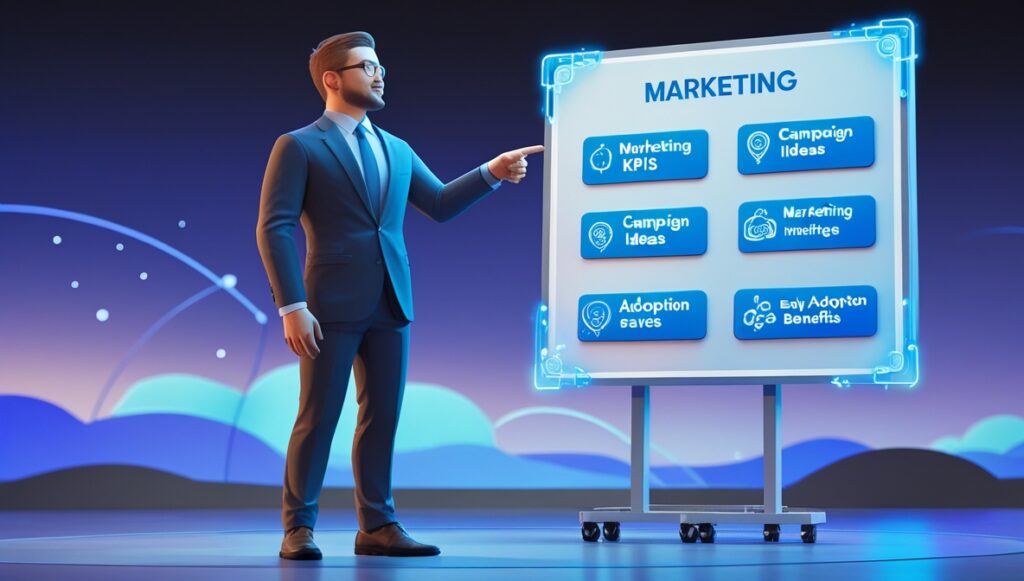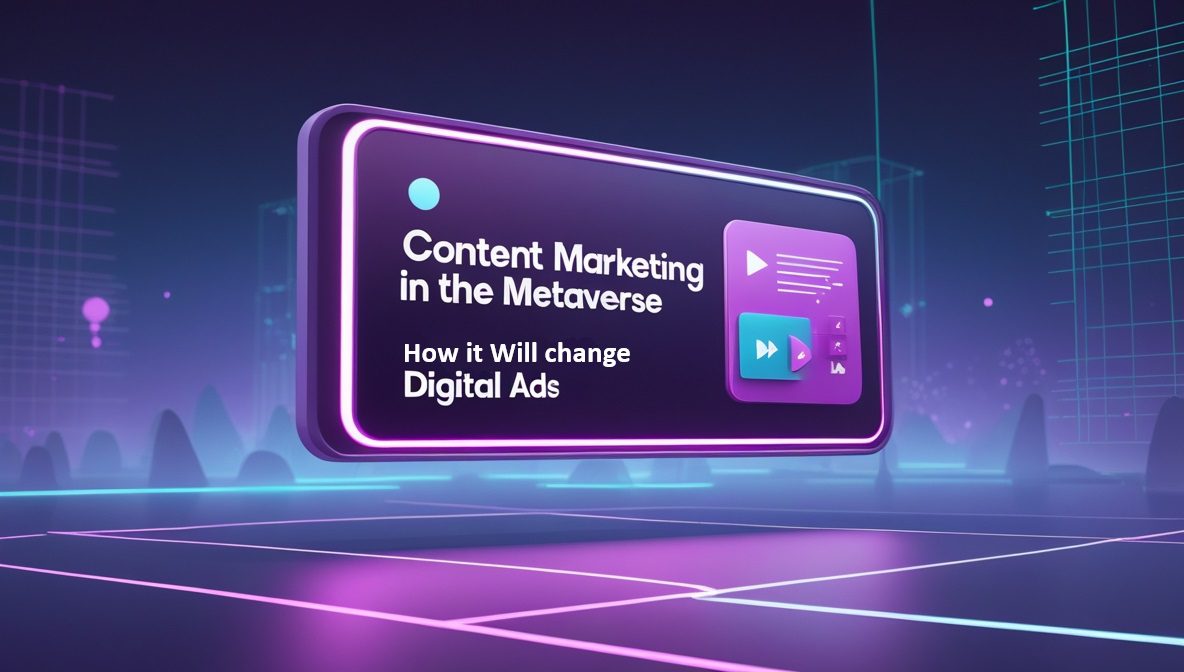The digital advertisement has always adjusted to user behavior and new platforms, but this time it is a change bigger than we have ever experienced. As virtual worlds get busier and more interactive, brands are reconsidering the approach to reach the audience. Content marketing in the Metaverse is quickly becoming one of the most important topics in digital strategy. It is not a different screen and a new environment but a totally interactive world in which people are able to socialize, shop, work and even play.
With this area expanding, marketers will have to consider going further than conventional advertising, social media or videos. They will have to create actual experiences which people can actually walk into, interact with and go even to live within them. The content is not just meant to be consumed anymore, it is turning into a room one walks into. This alters the way we think, design and execute digital campaigns on a fundamental level.
Why Traditional Advertising Isn’t Enough Anymore

From Content marketing in the Metaverse, Conventional online advertisement is based on two important aspects: impressions and clicks. Mainly, banners, sponsored posts, and pre-roll videos aim at capturing a user with an ad long enough to ensure awareness of the advert. In the Metaverse however, this is not the case. They are not only watching they are playing. The same happens with interruptive advertising in this environment. Having the camera fully under control, not to mention the environment and the rules, people are more liable to dismiss pop-ups or even overlays. This is driving brands to develop experiences that match the world and not disrupt it.
Immersive Spaces Replace Static Banners
Rather than the 2D banners or pop-ups, brands are constructing complete virtual premises. This might be a show room, event stage, branded lounge or interactive demonstration area. The users navigate through such spaces similarly as through a physical store. This strategy helps the advertising process to be less obtrusive. When the content is in harmony with the surrounding and it adds value, there will be increased chances of users being willing to consume it. The more one gets engaged, the easier he/she remembers the brand.
User Attention Is Harder to Interrupt
On the classical platforms, something can be put in front of a user easier. In the Metaverse, the users choose something to do, a place to visit, and the duration. In case the content is not appealing to them, they will just turn towards it. This implies that brands cannot seek attention; they have to be entitled to get it. Experiences should either be fun, instructive or socially useful. Otherwise, they just will not capture the interest of the users.
Engagement Over Clicks
Indicators such as clicks could no longer have any relevance in immersive spaces. Rather, the marketers review the duration that one engages in an experience, what that person does within it, and whether or not they come back. This alters how tracking and objectives are set towards content. It is necessary to build trust and presence instead of driving immediate conversions. The more time a person spends in a branded space, the more attachment he/she inculcates towards the brand.
New Forms of Content in the Metaverse

From the Content marketing in the Metaverse, As the flaws of the old-school advertising were revealed, new forms of content are beginning to emerge. Marketers are getting the sense of what sells in immersive space-not at all what is used in the traditional media. Content in this world is not visual only. It is spatial, responsive and even self-generated. Content marketing in the Metaverse is about creating real moments that happen in real time, with real users participating actively. This transition is bringing in formats that were not within existence a couple of years back.
Interactive Brand Worlds
There are companies that are constructing whole-new branded worlds within commonly used platforms such as Roblox, Decentraland or Fortnite. Such environments allow interacting differently with products. However, rather than watching their ad about a shoe, they can walk in it, jog in it and even flaunt it in front of their friends. This adds an experience element that the conventional formats cannot provide. Benefit demonstrations are over, it is time to allow the users to experience them within the virtual environment.
Virtual Influencer Collaborations
In the Metaverse, similar to social media marketing, influencers are gaining strength. However, they do not have real humans as their restrictions this time. The latest trend is brands partnering with virtual influencers: these are digitalized characters who have their own appearance, their personality, and audience. Such influencers can lead users through branded experiences, organize events or be parts of virtual shows. Setting up real interaction and they can embody the brand in ways which are natural to the digital world.
Live Events and Experiences
Even concerts, products releases, exhibitions, and even clothing releases, are occurring within metaverse platforms. Events draw huge masses and influence users to participate in an interactive experience. They motivate a user to take place in these events rather than make an effort to appear in one location bombarded with an advertisement. This emotional spending translates into more brand recall and word-of-the-mouth, both virtual and physical.
Strategy and Structure: Making Content Work in Immersive Spaces

In the Content marketing in the Metaverse, Entering the Metaverse is not the process of constructing a cool environment or hosting a glamorous event. It involves cognition, smart planning, and a profound knowledge of the user behavior patterns of such environments. The brands should think in terms of structure, interactivity, and long-lasting relevance. Successful content marketing in the Metaverse depends on building layered experiences that are both interesting and meaningful. It is all about balance between story telling and control of the user.
Gamified Engagement Loops
Rather than asking consumers to look at short advertisement campaigns, the brands are investing in permanent space: virtual places that are available everywhere at any time. This will enable the users to come back, go through the contents at a free will and develop a stronger bond with the brand. A space that takes sometime to refresh also implies that there is need to update the content on it. It has to evolve just like a real store to remain up-to-date. The frequency of the change of experience is dependent on how the user can keep coming back.
Gamified Engagement Loops
Gamification is turning out to be one of the best methods in terms of holding users. Saying it may be work, achieving large virtual amounts of money, or simply opening special content, these systems provide a motive to participate deeper. With the help of game mechanics, marketers transform the passive audience into active players. This not merely gives more time of engagement but also forms positive development of the brand.
Community-Driven Content
A community may be the most efficient force in immersive platforms. By sharing their content or experience, users will participate in the marketing process in a decent manner. Brands which open the door to the user-generated content, such as avatars, environments or stories, will have more organic reach. Such communities get involved into the brand narrative, and thus, trust and loyalty increase.
What Marketers Need to Do Today

From the Content marketing in the Metaverse, While many companies are still experimenting, it’s already clear that content marketing in the Metaverse isn’t just a trend—it’s a new channel. And just as it has been in the past with social media, the first movers will benefit the most. Marketers should reconsider their content, campaign and platform orientation in order to prepare. The faster they will begin to adjust the more they get to establish permanent outcomes in such virtual worlds.
Build Small, Learn Fast
You do not require to build a complete metaverse initiative in the first day. Begin with micro experiments first, have a pop-up shop, find an already established platform to collaborate with or release a wearable. These actions will allow your team to know what works without making gigantic risks. With time, the knowledge you would have acquired would be used to come up with larger and superior projects that resonate well with your readers and your brand style.
Focus on Real Value
Other people do not care about advertisements. What they are able to do, feel and experience matters to them. It implies that your content has to present something useful or pleasurable. It should be something that is entertaining, or educating or providing some form of social networking: the experience should bring value. Once, when people leave your virtual space with a positive thing in their minds, they will not forget about it and they will come back.
Build Cross-Platform Bridges
Metaverse platforms remain dissolute. One day users may be in Horizon Worlds and the other day in Roblox. The clever marketers are creating content which performs on multiple platforms and locates back to the physical digital existence. This involves a metaverse experience synchronized with the websites, social media and even offline campaigns. When all of the things come together, your message is more powerful and original.
Summary
Content marketing in the Metaverse is already reshaping the way brands reach users. It is no longer clicks and impressions it is an experience and communication. Rather than sending messages to people, marketers are creating spaces, events and tools in which people can browse. Everything is being transformed by this shift- change in the nature and form of the contents we share, the measurement of success.
The brands are forced to change their approach in order to stay afloat. The individuals who know how to develop impactful, immersive experiences would develop stronger connections with their audiences and will shine in the future of digital marketing.

